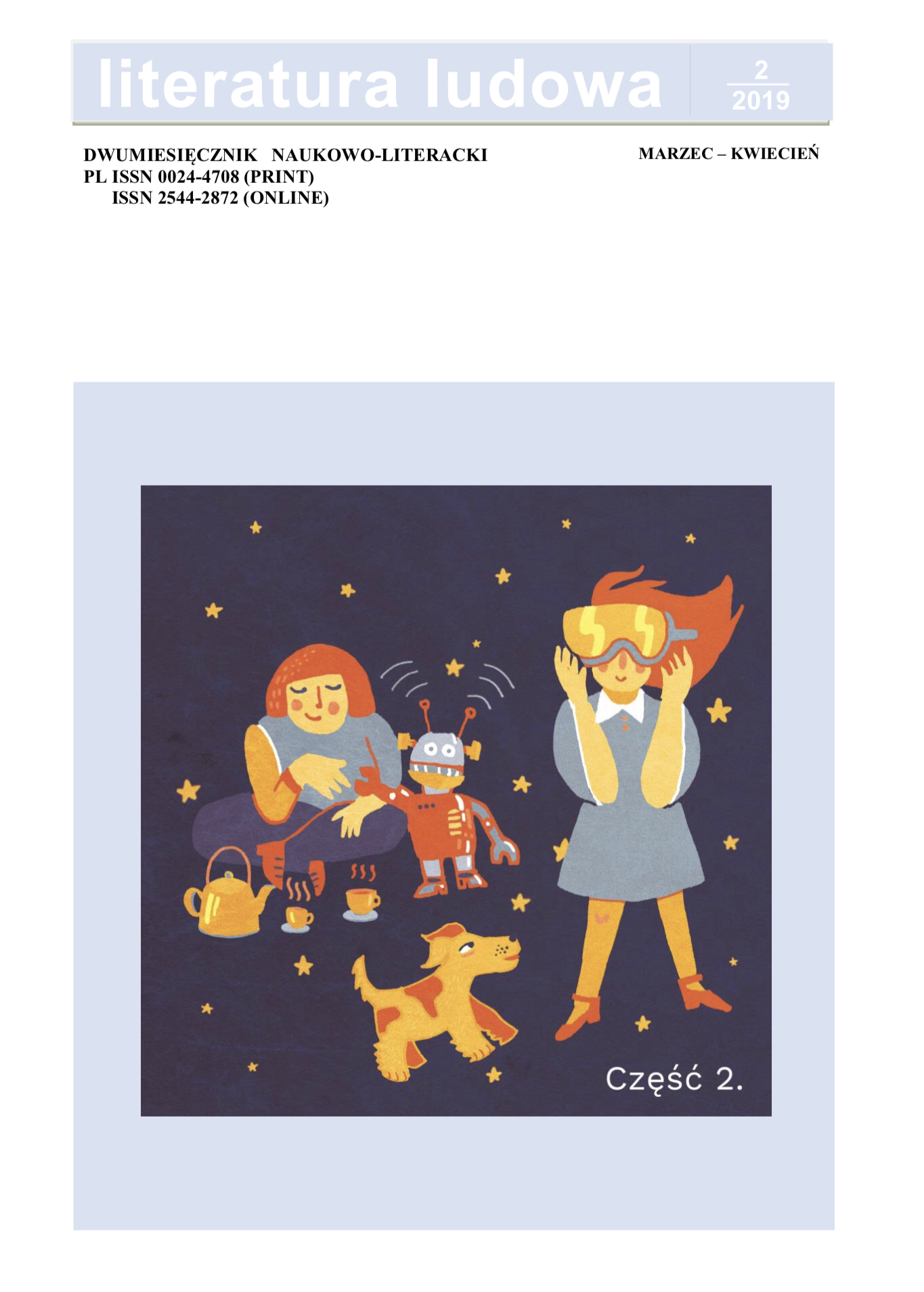Romantic Science Fiction. Future According to Teodor Tripplin
DOI:
https://doi.org/10.12775/LL.2.2019.004Keywords
future in literature, science fiction, Moon, romanticism, Sci-Fi, futures studiesAbstract
The present article aims to show the nineteenth century vision of the future in one of the first Polish science fiction novels, A Journey around the Moon (Podróż po Księżycu), written in 1858 by Teodor Tripplin. In the first (theoretical) part, the author characterizes the science fiction genre, highlighting a distinctive role of technological invention and scientific method, as well as locating the story in a future perspective. A concise description of the Polish science fiction genesis allows for relating Tripplin’s novel to a wider context and, hence, for considering it as a unique phenomenon in Polish literature. In the second part of the article, the author discusses Tripplin’s vision of the future, which is classified into three categories in the novel: 1) the future of technological inventions, 2) the future of medicine development, and 3) the future of society.References
BOULD M., BUTLER A.M., ROBERTS, A., VINT S. (ed.) (2009) The Routledge Companion to Science Fiction, London, New York: Routledge.
CAILLOIS, R. (1967). Od baśni do science fiction. W: R. Caillois, Odpowiedzialność i styl. Warszawa: Państwowy Instytut Wydawniczy.
CAILLOIS, R. (1989). Science fiction. W: R. Handke, L. Jęczmyk, B. Okólska (red.), Spór o SF. Antologia szkiców i esejów o science fiction. Poznań: Wydawnictwo Poznańskie.
CLARKE, A.C. (2002). The Collected Stories. London: Gollancz Science Fiction.
DYBIZBAŃSKI, M. (2005). Romantyczna futurologia. Kraków: Towarzystwo Przyjaciół Polonistyki Krakowskiej.
HANDKE, R. (1969). Polska proza fantastyczno-naukowa. Problemy poetyki. Wrocław: Zakład Narodowy im. Ossolińskich.
HANDKE, R. (1975). O pewnym materii pomieszaniu, czyli między baśnią a science fiction. „Teksty” nr 5.
HUTNIKIEWICZ, A. (1959). Twórczość literacka Stefana Grabińskiego (1887-1936). Toruń: Państwowe Wydawnictwo Naukowe.
JACKL, J. (1969). Wokół „Doświadczyńskiego”. Antologia romansu i powieści. Warszawa: Państwowy Instytut Wydawniczy.
JAMES E., MENDELSOHN F. (ed.) (2003). The Cambridge Companion to Science Fiction, New York: Cambridge University Press.
KINIORSKI, K. (1998). Nieznane fakty z życiorysu Teodora Teuttolda Tripplina. „Góry – literatura – kultura”, t. III.
KOLBUSZEWSKI, J. (2002/2003). Osobliwości życia i prozy doktora Tripplina. W: Annales Universitatis Mariae Curie-Skłodowska, Sectio FF, Philologiae, t. XX/XXI.
KONOPNICKA, M. (1881). Kilka słów o Teodorze Tripplinie i podróżach jego, „Wędrowiec” nr 13.
KRAJEWSKI, M. D. (1998). Wojciech Zdarzyński, życie i przypadki swoje opisujący (oprac. I. Łossowska). Warszawa: Uniwersytet Warszawski. Wydawnictwo Dydaktyczne Wydziału Polonistyki.
LATHAM R. (ed.) (2017). Science Fiction Criticism. An Anthology of Essential Writings, New York: Bloomsbury.
LEM, S. (1977). Posłowie. W: A. i B. Strugaccy, Piknik na skraju drogi. Las. Kraków: Wydawnictwo Literackie.
LEWESTAM, F.H. (1877). Dr T. Tripplin, „Kłosy”, nr 616.
ŁOSOWSKA, I. (1998). Wstęp. W: M. D. Krajewski, Wojciech Zdarzyński, życie i przypadki swoje opisujący (oprac. I. Łossowska). Warszawa: Uniwersytet Warszawski. Wydawnictwo Dydaktyczne Wydziału Polonistyki.
MIKOŁAJCZUK, J. (2017). Wprowadzenie. W: T. Tripplin, Lunatyka podróż po Księżycu. Warszawa: Wydawnictwo Polonistyki Uniwersytetu Warszawskiego.
NIEWIADOWSKI, A., SMUSZKIEWICZ, A. (1990). Leksykon polskiej literatury fantastycznonaukowej. Poznań: Wydawnictwo Poznańskie.
SŁOMCZYŃSKI, A. (1997). Narwaniec. W: A. Słomczyński, Warszawskie to i owo. Warszawa: Instytut Wydawniczy Pax.
SMUSZKIEWICZ, A. (1977). W stronę opowieści o „cudownym wynalazku” (Z dziejów polskiej S-F cz. IV). „Nurt” 08 (148).
SMUSZKIEWICZ, A. (2016). Zaczarowana gra. Stawiguda: Solaris.
Downloads
Published
How to Cite
Issue
Section
License
1. The authors give the publisher (Polish Ethnological Society) non-exclusive license to use the work in the following fields:a) recording of a Work / subject of a related copyright;
b) reproduction (multiplication) Work / subject of a related copyright in print and digital technique (ebook, audiobook);
c) marketing of units of reproduced Work / subject of a related copyright;
d) introduction of Work / object of related copyright to computer memory;
e) dissemination of the work in an electronic version in the formula of open access under the Creative Commons license (CC BY - ND 3.0).
2. The authors give the publisher the license free of charge.
3. The use of the work by publisher in the above mentioned aspects is not limited in time, quantitatively nor territorially.
Stats
Number of views and downloads: 320
Number of citations: 0



